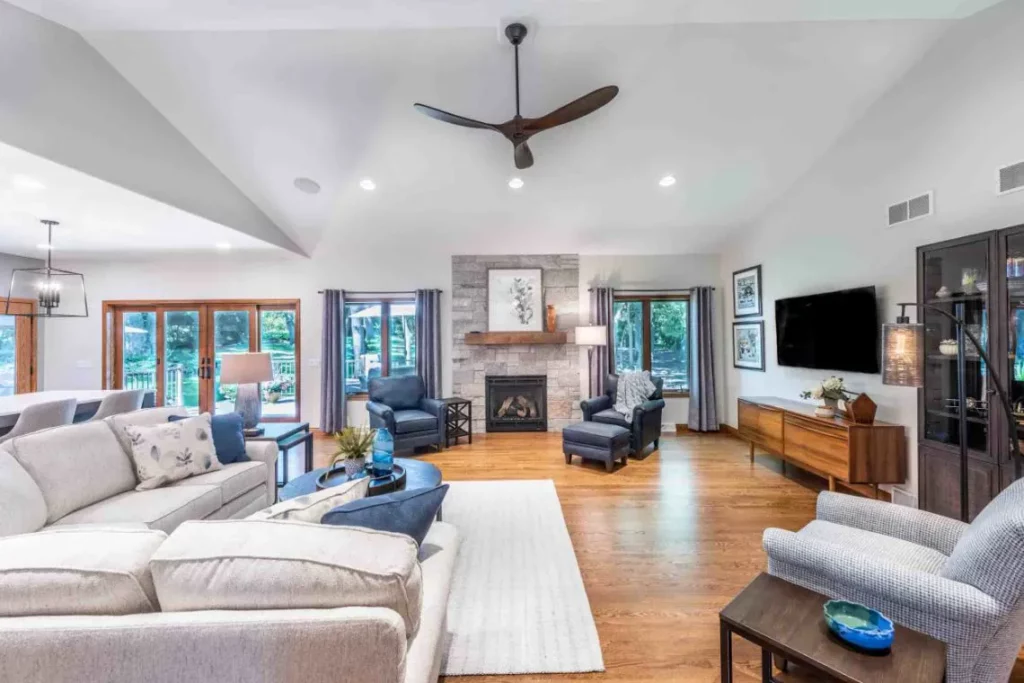The transformation of a living space through home renovation not only enhances the aesthetic appeal of the property but also significantly boosts its value.
It is an investment aimed at improving comfort, functionality, and overall satisfaction with one’s residence.
Renovation processes offer limitless possibilities from modest modifications to comprehensive overhauls, each with potential to drastically revitalize one’s environment.
The benefits are manifold; they include improved energy efficiency, expansion of usable space, and tailored customization in line with personal style preferences.
Embarking on a successful home renovation requires careful planning and execution.
Key steps comprise identification of needs versus wants, budgeting considerations, sourcing reputable contractors and designers among others.
Equally important is understanding various renovation techniques that cater to different design aspirations while adhering to local building codes and regulations.
In essence, renovations embody the process of creating a personal sanctuary – a place where one truly belongs – by transforming existing spaces into dream homes reflecting individual tastes and lifestyles.
The Benefits of Home Renovation
Home renovation, when undertaken meticulously, can yield significant benefits such as enhancing aesthetic appeal, increasing property value, improving functionality and comfort, and promoting energy efficiency. These transformations are not merely superficial adjustments but are profound changes that improve the overall quality of life within the home space.
A well-executed renovation project can transform an ordinary living space into one that resonates with personal style while simultaneously reflecting the needs and wants of its inhabitants.
A notable advantage of renovating is the potential to increase a property’s market value significantly. By incorporating modern design elements, utilizing high-quality materials, and paying attention to details such as fixtures and finishes, a renovated home often attracts higher market interest compared to one lacking recent upgrades.
Furthermore, reconfiguring spaces or adding new rooms can result in improved practicality for homeowners. For instance, creating an open-plan kitchen-diner provides more social interaction opportunities than a standard closed-off kitchen layout. Such improvements not only enhance daily living experiences but also make homes more appealing to potential buyers.
Another critical aspect related to home renovations is their ability to promote energy efficiency. Upgrading appliances or installing energy-efficient windows can drastically reduce utility costs over time by minimizing heat loss during winter or cool air escape during summer months. Similarly, insulation improvements in walls or roofs contribute towards maintaining consistent indoor temperatures throughout the year while decreasing reliance on artificial heating or cooling systems.
Adopting these eco-friendly measures through home renovations undoubtedly leads towards increased household savings and contributes positively towards environmental sustainability goals without compromising on comfort levels within the revamped dream homes.
Steps to a Successful Home Renovation
Initiating an effective remodel of a living area requires careful planning and execution, much like orchestrating a complex symphony.
The first step in any successful home renovation project is to lay out a clear plan, outlining goals and objectives for the space. This includes identifying what needs to be changed, how it should look after the renovation, and determining whether structural changes are required.
With these details in place, one can then start thinking about aesthetics such as color schemes, furniture placement, and décor elements that will enhance the overall ambiance of the room.
Following this initial planning stage comes budgeting – an integral part of any home renovation process. It is essential to establish a realistic budget that reflects both material costs and labor charges while also considering contingencies for unexpected expenses.
Once the budget has been set up properly, it becomes easier to make decisions regarding materials and finishes; it allows homeowners to balance between their dream design aspirations and practical financial constraints effectively. Additionally, scheduling plays a vital role at this stage; setting out timelines helps ensure smooth progress of work without disruption or delay.
The last phase of a successful home renovation involves hiring competent professionals who can execute the planned design with precision while adhering strictly to predetermined budgets and schedules. Engaging experienced contractors not only ensures quality workmanship but also mitigates potential risks associated with unskilled labor or do-it-yourself attempts.
Furthermore, working closely with these experts throughout the renovation process enables homeowners to achieve their envisioned dreamscape within their living spaces – transforming houses into homes where memories are created amidst comfort and warmth.
Building Greener Tomorrows: Eco-Friendly Home Remodeling In Action


